Figures & data
Table 1 Species percent cover across the four soil types. Seeds were not collected from species by parent soil combinations in parentheses. Blank cells indicate a species does not occur on a particular soil type. To determine species percent cover, we randomly selected twenty 0.5 × 0.5 m subplots within each 10 × 10 m plot and determined the percent cover of all species on each subplot.
Table 2 Species average germination, mortality, and establishment percentages at the end of 16 weeks.
Figure 1 Final percent germination for species at end of 16 weeks, showing differences between both parent and offspring soils. Each species by parent soil by offspring soil treatment had 9 replicates distributed in two growth chambers. Values are mean ± one standard error. Bar shading denotes the offspring soil into which seeds were planted. See text for species name abbreviations.
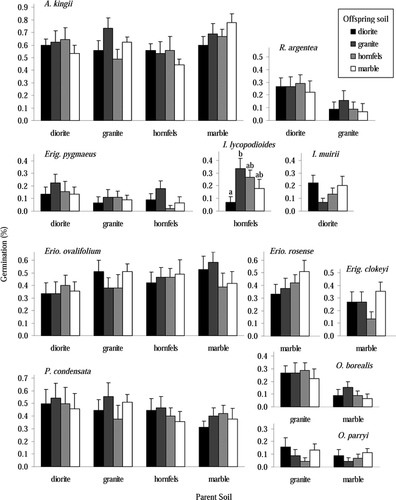
Table 3 Analyses of variance for effects of parent soil, offspring soil, and block on seed germination of each plant species. Significant differences between treatments are indicated as *p < 0.05, **p < 0.01, ***p < 0.001. MS = mean square, df = degrees of freedom.
Table 4 Analyses of variance for effects of parent soil, offspring soil, and block on seedling establishment of each plant species. Significant differences between treatments are indicated as: *p < 0.05, **p < 0.01, ***p < 0.001.
Table 5a Analysis of variance for effects of seed type (species by parent soil combinations), offspring soil, and block on seed germination among the 11 plant species. Treatments are significantly different from one another if the p-value shown is less than 0.05.
Table 5b Tukey test probabilities comparing percent germination between different “seed types”. Parent soils indicated in parentheses.
Table 6 Analysis of variance for effect of parent substrate of seed mass (µg) for each species. Mean and one standard error, in parentheses, given for each soil type. Significant differences between treatments are indicated as: *p < 0.05, **p < 0.01, ***p < 0.001.
Figure 2 Germination curves for species across time. All “parent” and “offspring” soil treatments are averaged.
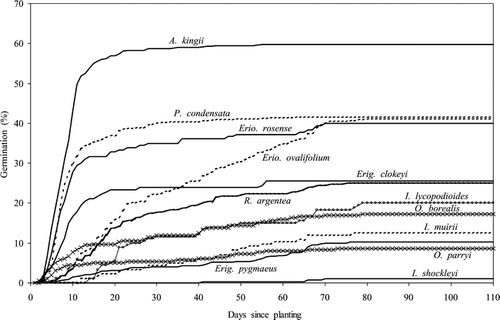
Figure 3 Relationship between percent cover on sites on which a species in present and percent germination, across all offspring soil types.
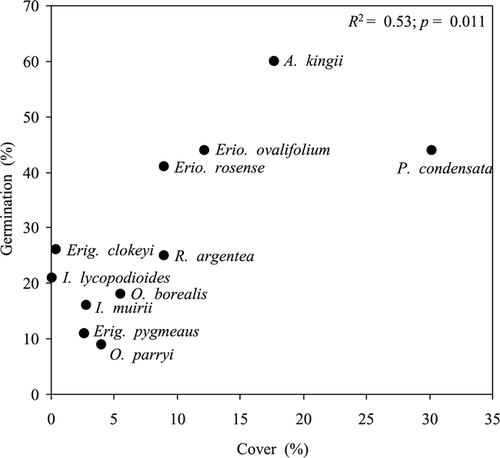
Figure 4 Seed masses of species on each soil type on which they naturally occur. Values are mean ± one standard error. Error bars are only shown where larger than symbols.
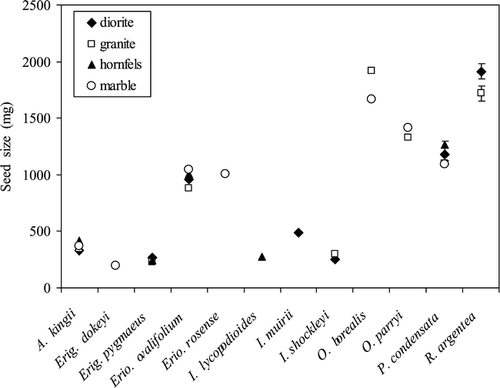
Figure 5 Plant biomass estimates after either one year (A. kingii and P. condensata) or two years (other species) of growth. Values are mean ± one standard error. Bar shading denotes the offspring soil into which seeds were planted.
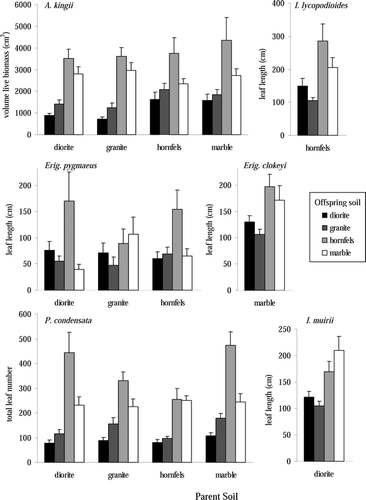
Table 7 Analysis of variance for effects of offspring soil type on plant biomass in growth chambers. Biomass for A. kingii is volume of live material (cm3), for P. condensata is total leaf number, and for the other species is total leaf length (mm). Mean and one standard error, in parenthesis, given for each offspring soil type. Significant differences between treatments are indicated as: + p < 0.10, *p < 0.05, *p < 0.01, ***p < 0.001.